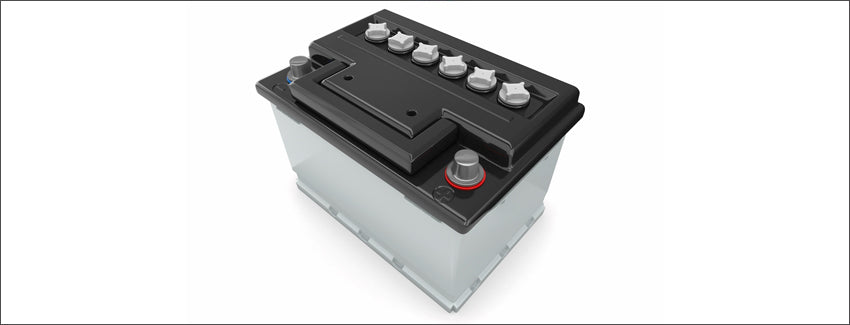| If you have an electric start ride, you have a battery. Let's take a look at batteries, battery tech and who kind of battery you should have. |
| TYPES |
| Conventional |
| This is the cheapest battery. It also requires the most maintenance. |
| You'll be adding water, distilled water please, to the battery to maintain it. The caps do not seal the battery well enough to keep the liquid inside. When the battery warms up, the liquid insideevaporates. |
| These batteries also discharge their stored power faster that other batteries. |
| Maintenance Free |
| These are more expensive than conventional batteries |
| Some batteries come with the acid in place. Sometimes, you must add the acid mix and put the cap on. It seals tightly, keeping the acid-water mix inside the battery. The manufacturers say you will never need to add water to the battery. |
| They don't spill either. |
| In my experience, that is partly true. I've used maintenance free batteries that went dry. Electrical system malfunctions. The battery was ruined. Prying the cap off the battery to add more water ruins the cap, so you still can't add water. |
| Lithium Ion Phosphate |
| These batteries are even more expensive than the two above. A quick check on Google Shopping shows lead acid batteries running from about $60 to $120. Lithium batteries start at $143 and go to $225. |
| The advantages are maintenance free and they last longer, up to 5 years. AtBatt.com said the lithium batteries are "virtually incombustible." That means they won't catch fire or explode. Lead-acid batteries explode, but it is rare and usually only happens when the battery vents gasses into a confined space. |
| Reality says lithium batteries can and do catch fire. Remember hover boards? Boeing's 787 fleet was grounded because of lithium-ion battery problems. With proper attention, installation and manufacturing, lithium batteries are safe. |
| Lithium batteries are lighter than lead batteries. |
| These do not spill. They do not vent gasses, which is how lead-acid batteries start the explosion cycle. The lithium ion phosphate battery is considered non-toxic (unlike regular lithium batteries that have lithium cobalt |
| Gel Maintenance Free |
| Prices range from a suspiciously low $27 to $169 on Google shopping. The phrase "gel battery" is often used to describe the gel battery and an absorbed glass matt battery. ThrottleXBatteries has a good comparison and explanation of the two. |
| These are pretty tough batteries. They can be installed and used laying on the side. They cannot be used installed upside down. They do not leak. |
| HOW THEY ARE MADE |
| All wet-cell batteries (the ones with an acid mix) are generally made the same way. A plastic box houses lead plates. Connections are made between the plate. The plates are flooded with an acid compound. When the two terminals are connected, electrons (electricity) move from one post to another. How Stuff Works shows the production process in this video. |
| Here's a look inside a Chinese lithium phosphate battery plant. |
| THE BEST BATTERY |
| So what is the best battery for your ride? You can go with the maker's recommendation. Just remember the motorcycle companies often have partnerships with parts companies and that includes batteries. The owner's manual will recommend a brand of battery because of that partnership. |
| When you buy a replacement battery, you need tobuy based on how, where and when you ride. |
| Fit |
| The new battery has to fit the bracket. To bid, it won't go in. Too small and it will bounce around in the space. It could break open. No matter what kind of battery you have, a broken battery is dangerous. |
| Climate |
| If you ride in a colder region, you need more cold-cranking amps. A biker in New York needs more cranking power than a rider in South Florida. |
| How often you ride |
| If you ride daily or several times a week, you can get by with a battery that has a high natural discharge rate, If you ride infrequently, the battery needs to keep a charge for longer. Lithium is good for this. |
| Get a trickle charger with a maintenance circuit if you ride infrequently. |
A look at motorcycle batteries

Tags: Gear guides




